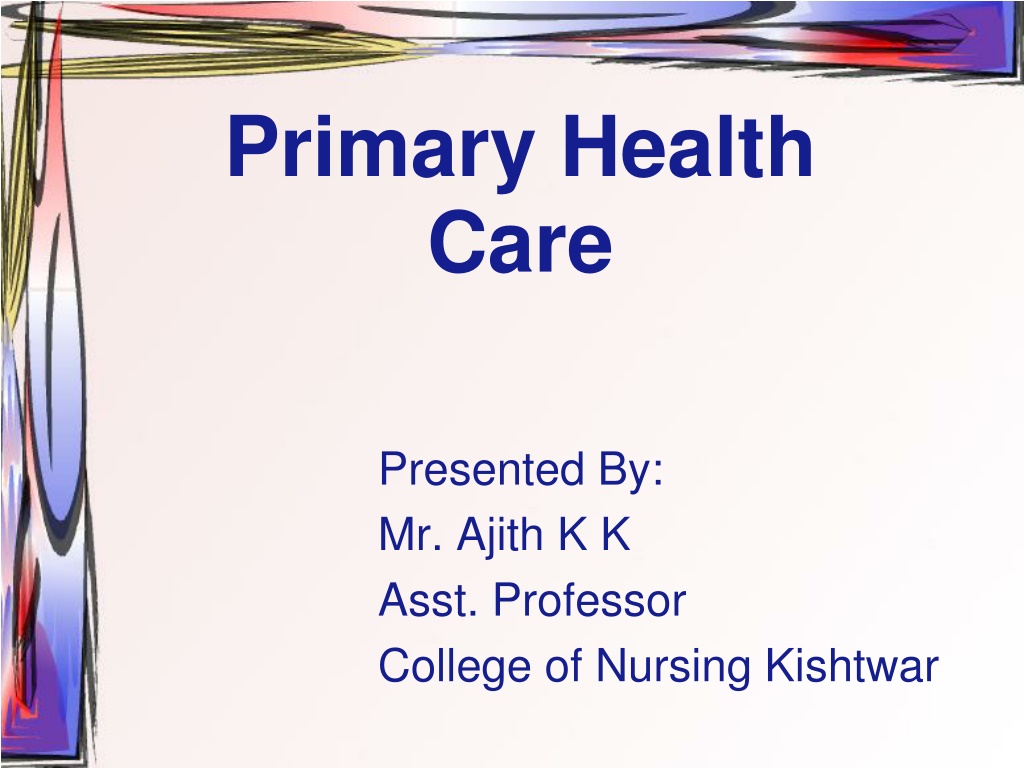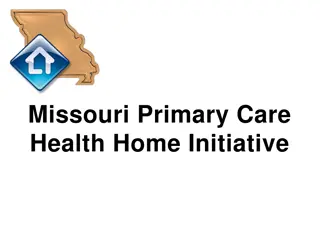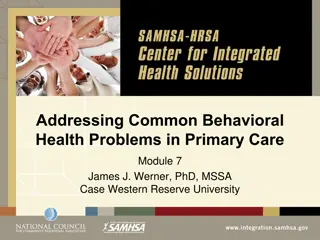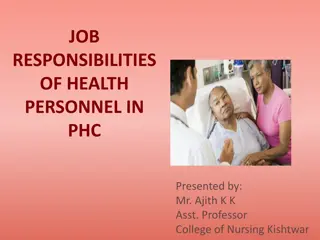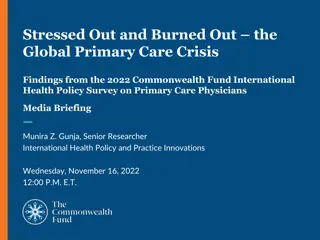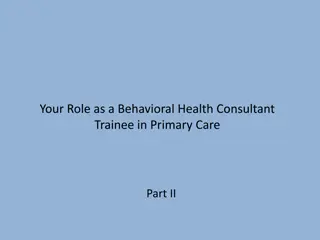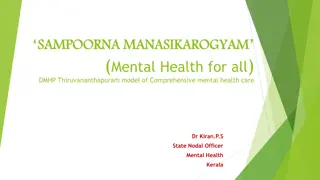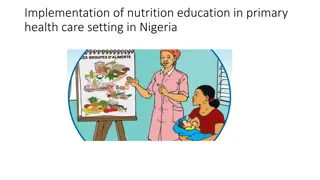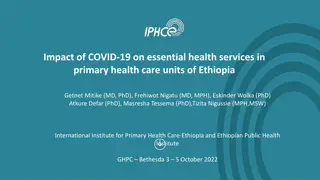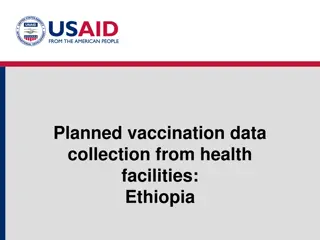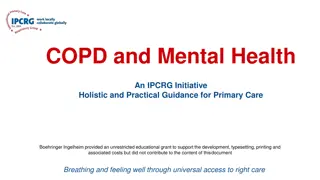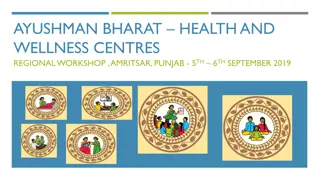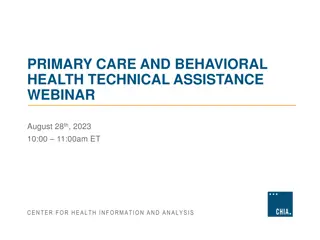Understanding Primary Health Care and Its Importance
Primary health care is essential for providing integrated services like preventive, promotive, curative, and rehabilitative care. It is crucial for governments to ensure adequate health measures for their citizens to lead productive lives. Primary health care emphasizes prevention, community participation, and affordability, combining modern knowledge with traditional healing practices. Its characteristics are shaped to suit population needs, focusing on prevention and self-reliance.
Download Presentation

Please find below an Image/Link to download the presentation.
The content on the website is provided AS IS for your information and personal use only. It may not be sold, licensed, or shared on other websites without obtaining consent from the author. Download presentation by click this link. If you encounter any issues during the download, it is possible that the publisher has removed the file from their server.
E N D
Presentation Transcript
Primary Health Care Presented By: Mr. Ajith K K Asst. Professor College of Nursing Kishtwar
Difference Between Medical And Health Care Medical Care- Personal services provided directly by physician Health care- Integrated care comprising of : Preventive Promotive Curative Rehabilitative/restorative services
Health Care system Administrative level Location level (Population) Zonal (50 Lakhs) Health care level Type of health care Divisional level Medical College Tertiary District Headquarters (10 Lakhs) Talluk/Block Headquarters (80000-120000) Village (30000) Village(5000) Zilla Parishad District hospital Secondary Panchayat Samiti or Taluka Panchayat Community Health Centre (CHC) Secondary Gram Panchayat Primary Health Centre/ Primary Gram Panchayat Sub-centre Primary Village (1000) Ward Panch ASHA , AWW, Jan-Mangal Couple Primary 3
Primary Health Care (a) Governments have a responsibility for the health of their people that can be fulfilled only by the provision of adequate health and social measures. (b) Primary health care is the key to attaining a level of health that will permit their citizens to lead a socially and economically productive life.
Introduction Primary health care is defined as Essential health care based on practical, scientifically sound and socially acceptable methods and technology, made universally accessible to individuals and families in the community through their full participation and at a cost that the community and country can afford to maintain at every stage of their development in the spirit of self-reliance and self-determination
Characteristics of Primary Health Care (a) Stresses prevention rather than cure. (b) Relies on home self-help, community participation and technology that the people find acceptable, appropriate and affordable. (c) Combines modern, scientific knowledge and feasible health technology with acceptable, effective traditional healing practices.
Characteristics (d)Should be shaped around the life patterns of the population. (e) Should both meet the needs of the local community and be an integral part of the national health care system. (f) Should be formulated and implemented with involvement of the local population.
Principles (Pillars) of Primary Health Care
1.Community Participation While most of the efforts in providing health care come from the state, the system of primary health care should be based on full participation and involvement of the community. It is aims to placing people s health in people s hands.
Cont... In our country, the concepts of ASHAs, VHGs, AWWs TBAs.
2.Appropriate Technology Appropriate technology is one which is scientifically sound, adapted to local needs, acceptable to those who apply it and to those on whom it is applied can be maintained by the people, as a part of self reliance and within the resources which can be afforded by the community and the nation.
Outstanding examples of appropriate technology are the use of Oral rehydration therapy IFA DOTS Immunization programme Smokeless chulha Supplimentary food
3.Inter-Sectoral Coordination Health care, especially primary health care s preventive and Promotive functions can not be executed in isolation by health sector alone.
These include Education, PRI ICDS Road & communication Animal husbandry Social welfare Urban / rural development, Food & agriculture Industrial and such other sectors Voluntary organization
4.Equitable Distribution Health services should be available to each and every one in the community not depend on one s capability to pay for the services (rich & poor) Rural or urban Urban or urban slums disadvantaged groups within the homes / society
Components of Primary Health Care Eight essential components : (a) Education about common health problems and what can be done to prevent and control them; (b) Maternal and child health care, including family planning;
(c) Promotion of proper nutrition; (d) Immunization against major infectious diseases; (e) An adequate supply of safe water; (f) Basic sanitation; (g) Prevention and control of locally endemic diseases; (h) Appropriate treatment for common diseases and injuries with provision of essential drugs.
